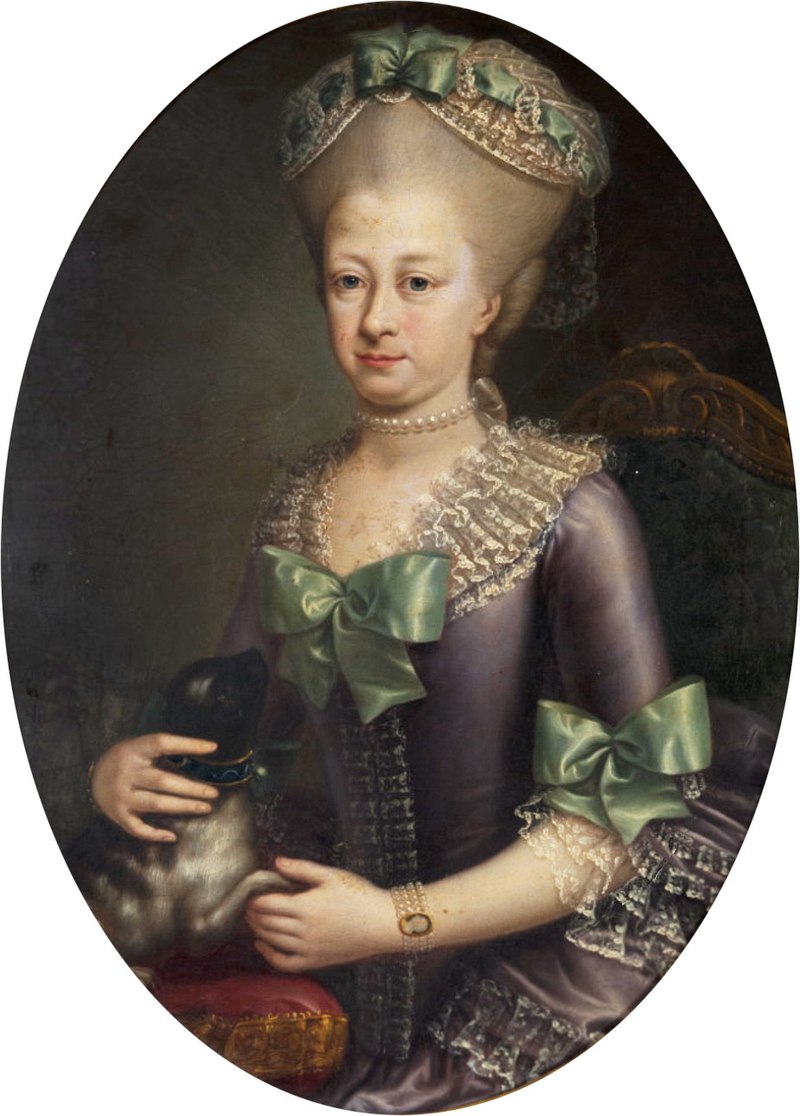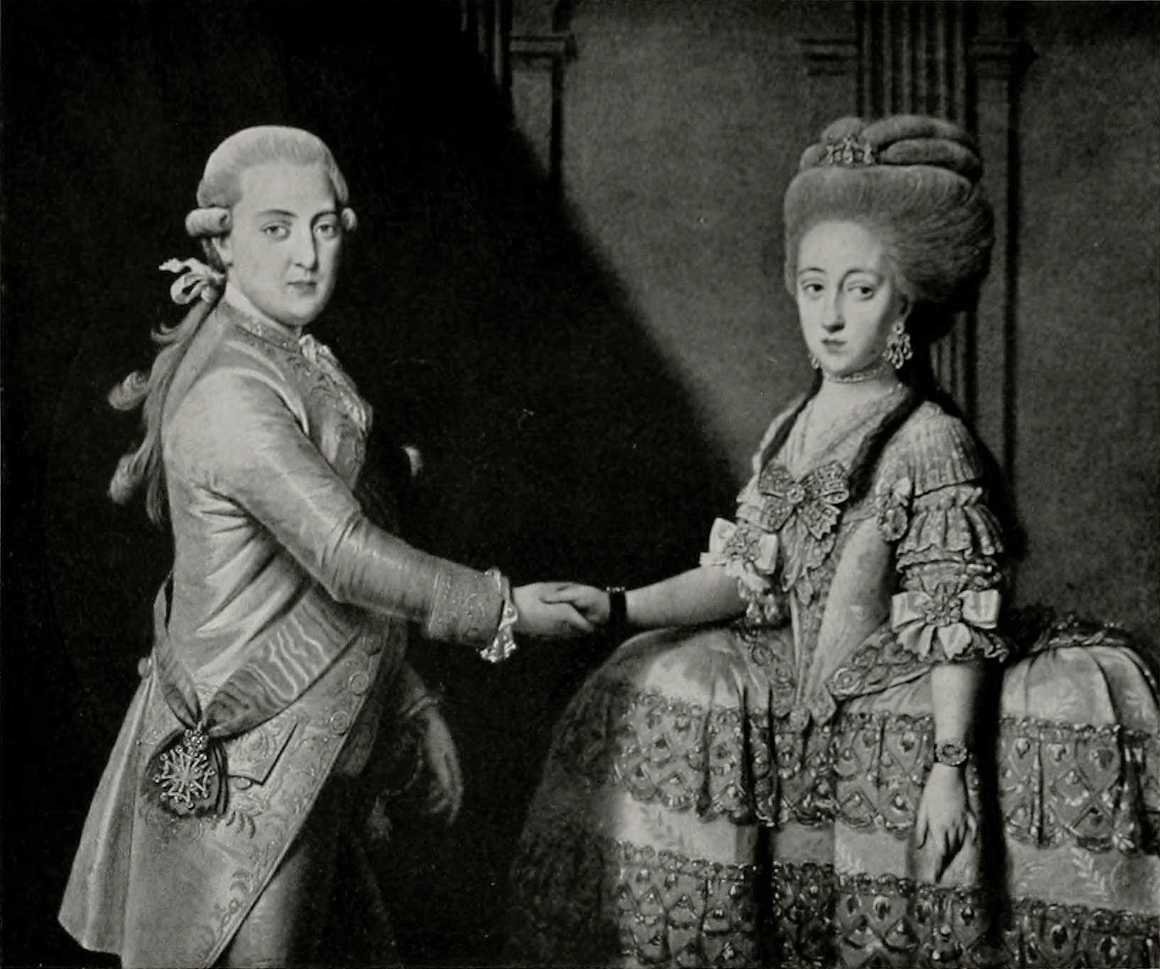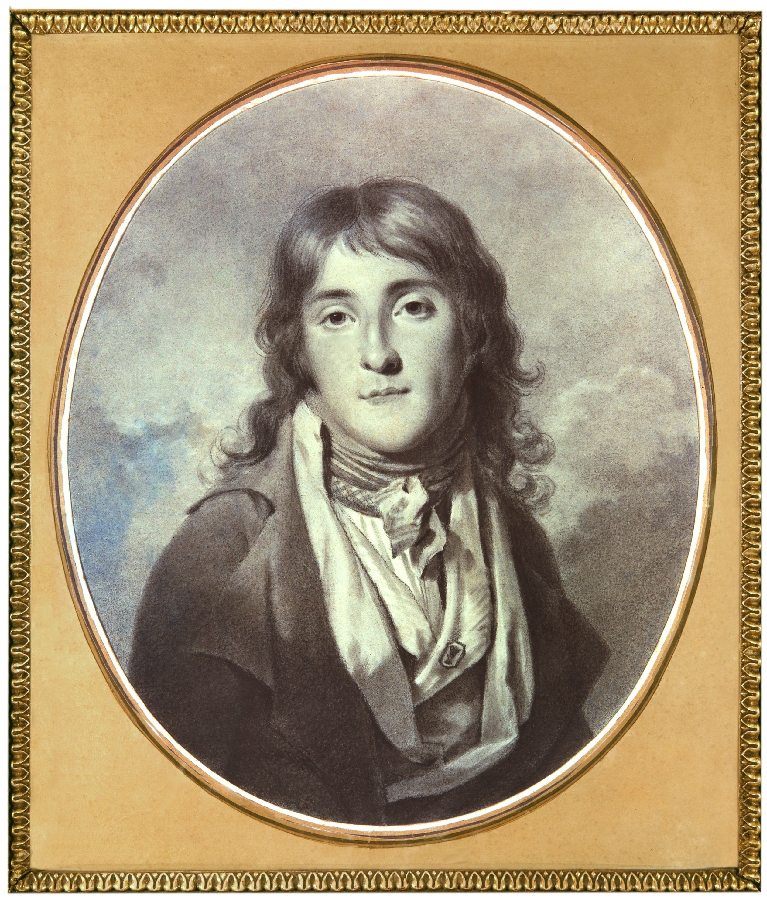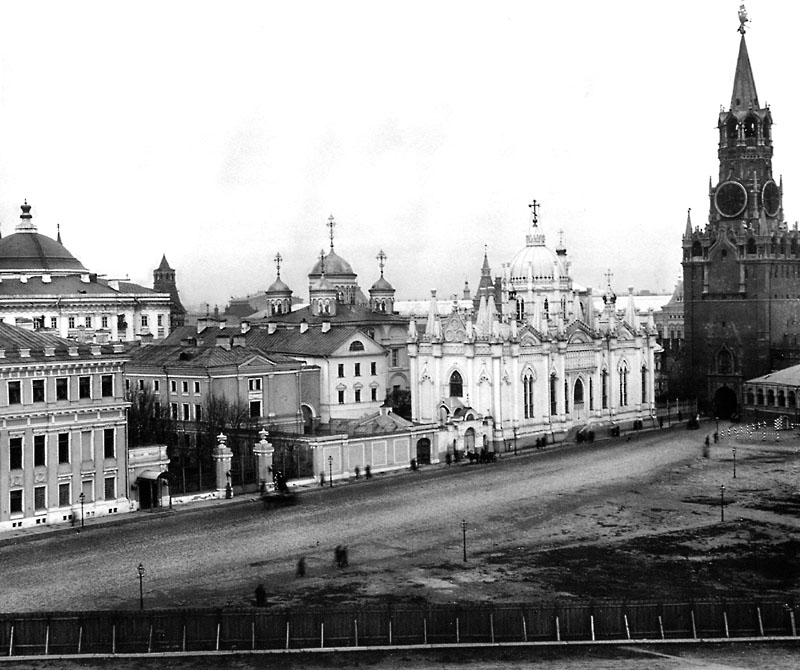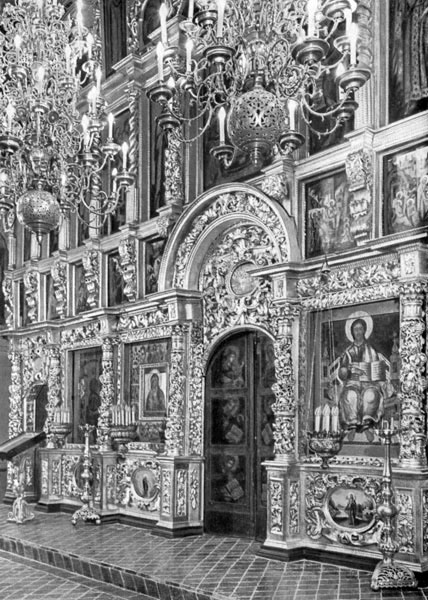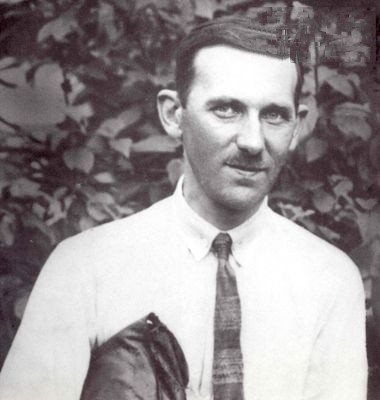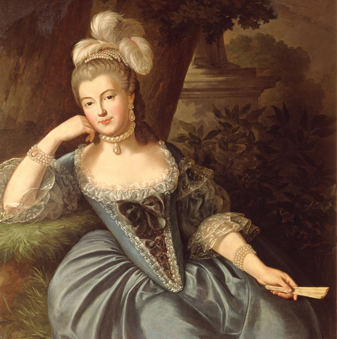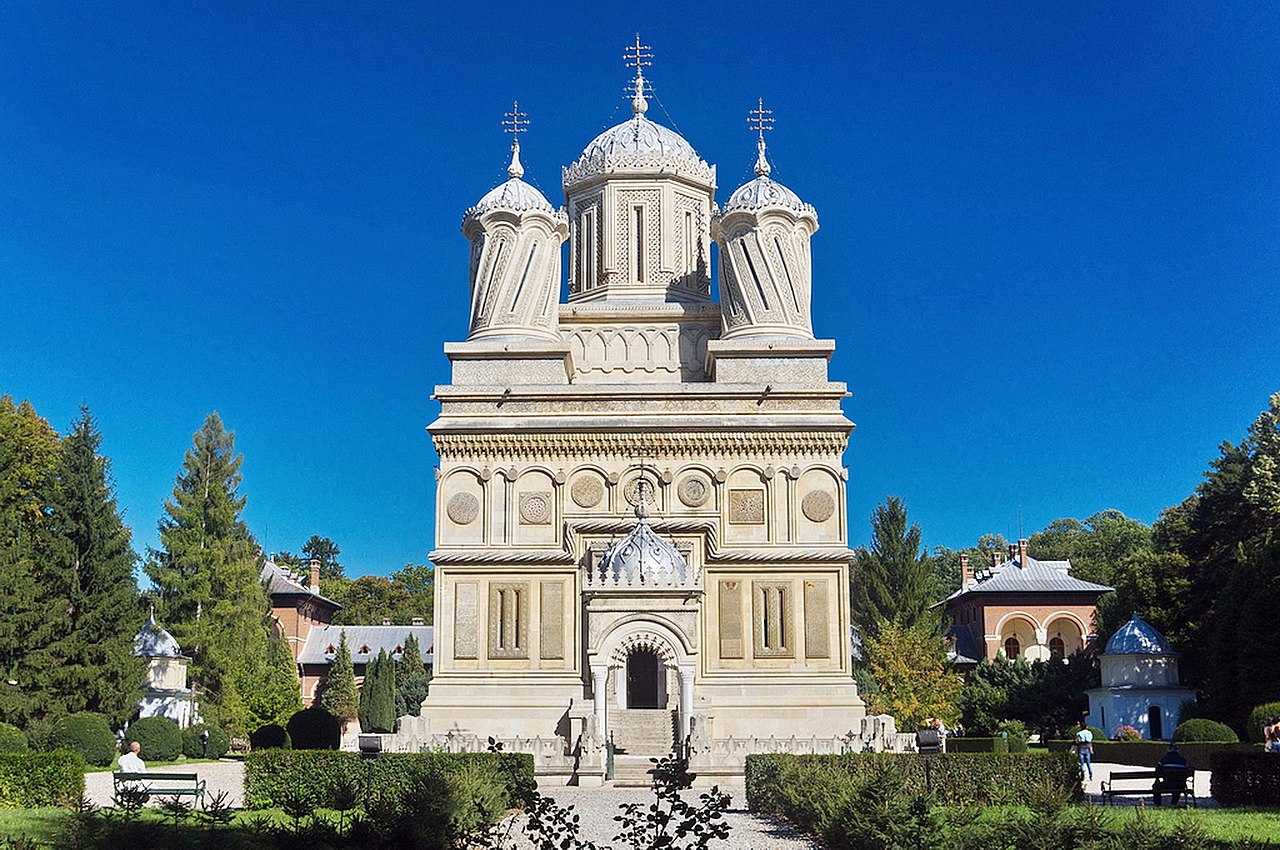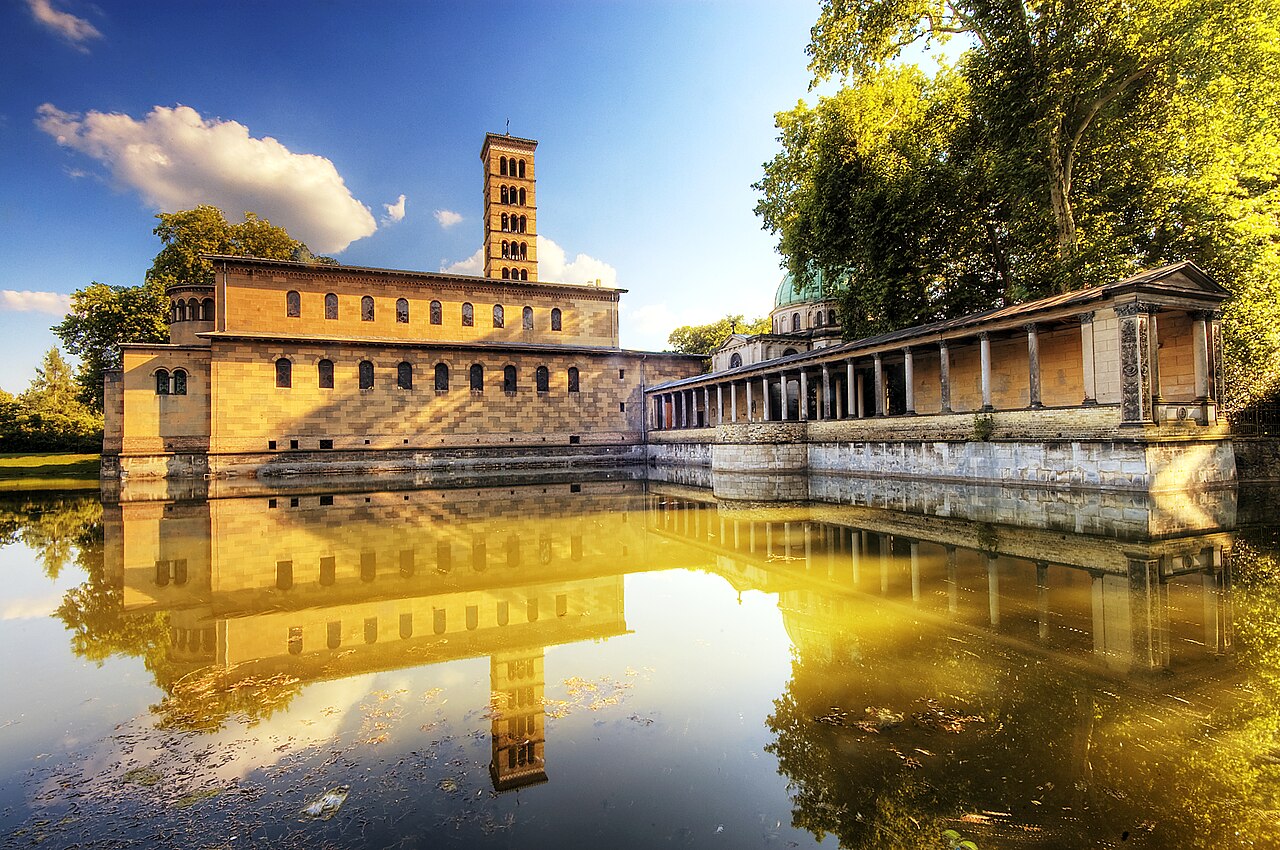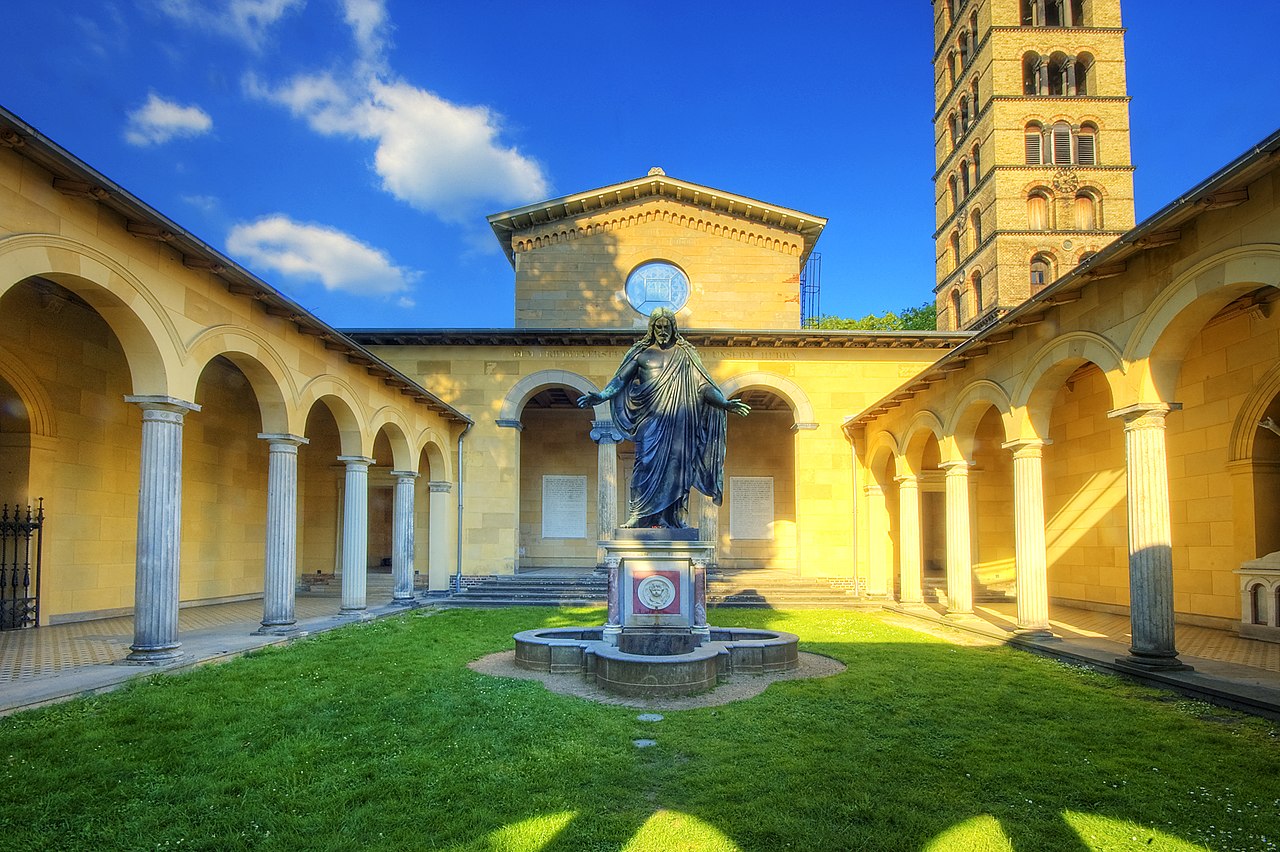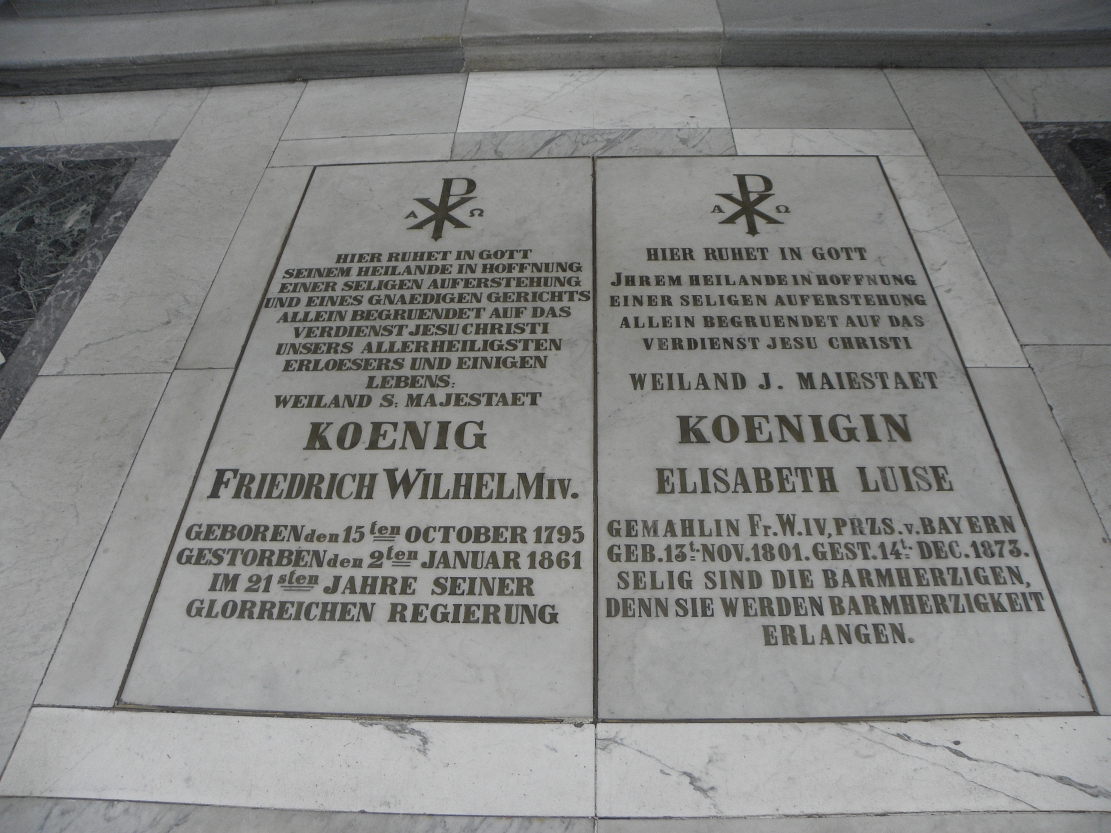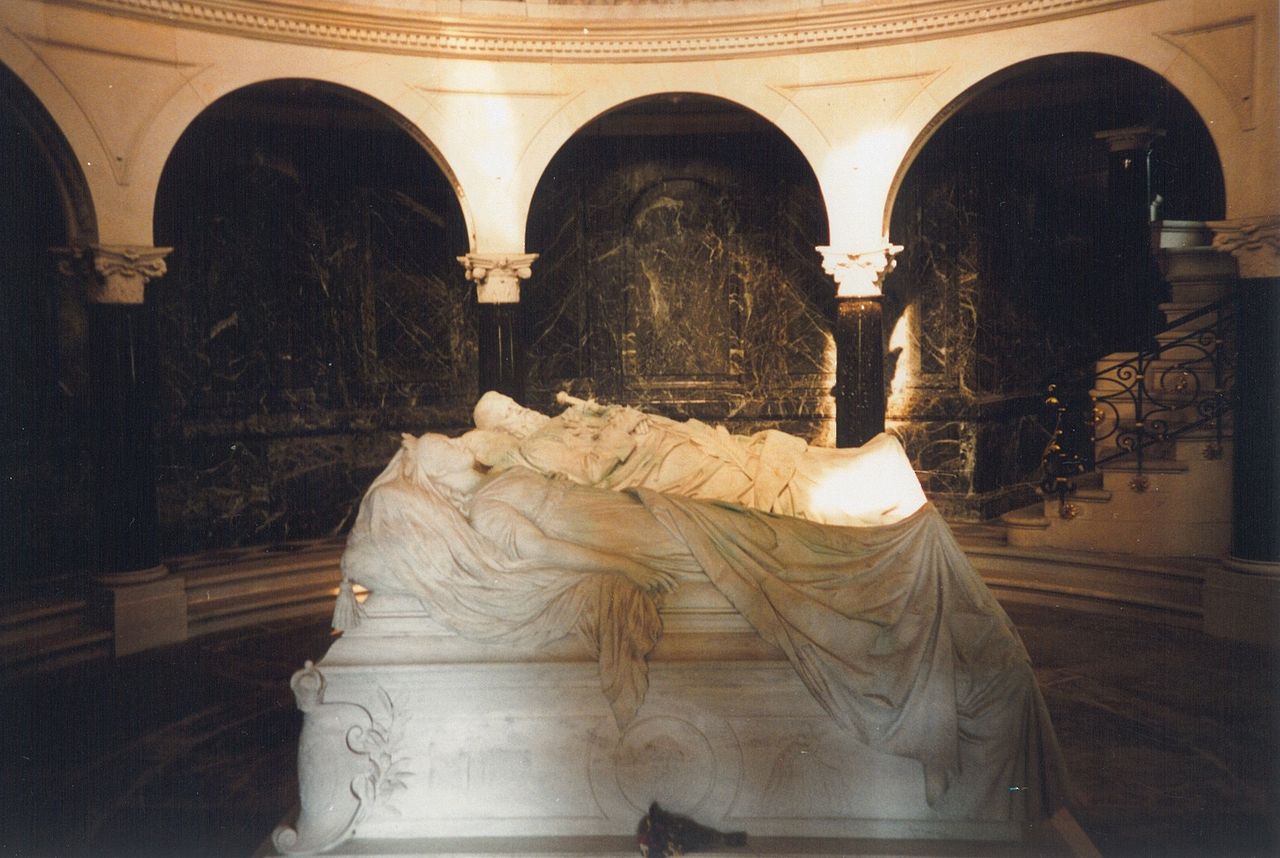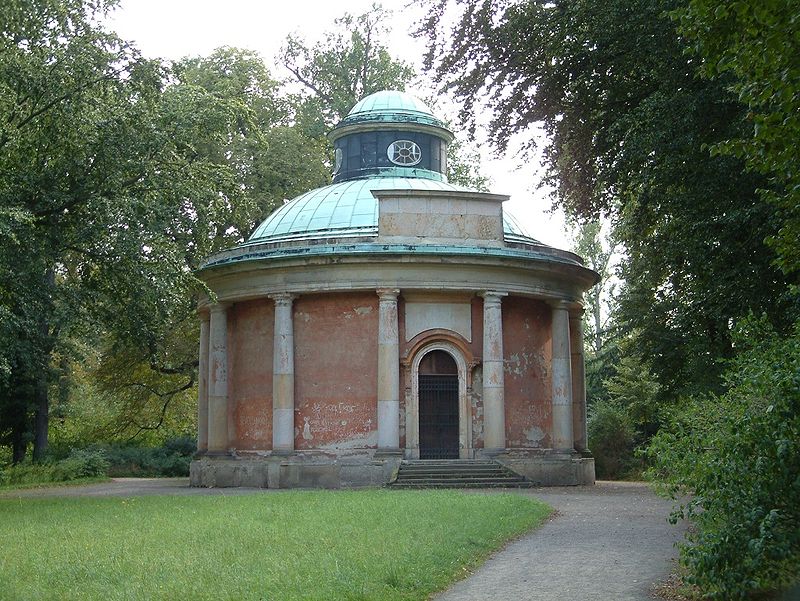by Susan Flantzer
© Unofficial Royalty 2022

Archangel Cathedral; Credit – Wikipedia
The Archangel Cathedral is a Russian Orthodox church dedicated to the Archangel Michael in the Moscow Kremlin in Moscow, Russia. The Moscow Kremlin is a fortified complex founded by the Rurik dynasty in the late 15th century. It includes five palaces, four cathedrals, and the enclosing Kremlin Wall. Before the founding of St. Petersburg by Peter I (the Great), Emperor of All Russia in 1703, the Moscow Kremlin was the seat of power for the Rurik and early Romanov rulers of Russia. The Moscow Kremlin now serves as the official residence of the President of the Russian Federation.
Male rulers of the Rurik dynasty and the early Romanov dynasty along with close male relatives and some Russian noblemen were interred at the Archangel Cathedral. When Peter I (the Great), Emperor of All Russia, moved the capital of Russia from Moscow to the new city of St. Petersburg, the new Peter and Paul Cathedral became the Romanov burial site for both men and women. In 1730, Peter II, Emperor of All Russia, the grandson of Peter I (the Great), died in Moscow from smallpox, aged fourteen, and was the last ruler to be interred in the Archangel Cathedral.
Previously women had been interred at the Ascension Cathedral of the Ascension Convent in the Moscow Kremlin. In 1929, the Ascension Convent and its cathedral were destroyed by the Soviets to make room for the Red Army School. At that time, the remains of those buried there were moved to the crypt of the Archangel Cathedral in the Moscow Kremlin.
********************
History of the Archangel Cathedral

Panorama of the Kremlin in Moscow by Eduard Gaertner, 1839, showing the Archangel Cathedral on the right; Credit – Wikipedia
Prior to the current cathedral built from 1505 – 1508, there was a wooden church built in 1250 that was replaced with a stone church in 1333. The stone church was crowded with burials of earlier Rurik rulers and needed renovation, so Ivan III, Grand Prince of Moscow decided to build a new cathedral on the site. Just as he had done twenty years earlier when the Assumption Cathedral in the Moscow Kremlin was built, Ivan III invited an Italian architect, Lamberti Aloisio da Mantagnana, known in Russia as Aloisio the New, to design and oversee the construction of the new cathedral. The groundbreaking occurred on May 21, 1505. However, Ivan III, Grand Prince of Moscow did not live to see the new cathedral completed. He died on October 27, 1505, and was interred in the unfinished cathedral. Work on the cathedral was completed by the end of 1508, but it was not formally consecrated until November 8, 1509.
In 1918, during the Russian Revolution, the Archangel Cathedral and the other churches in the Kremlin were closed as houses of worship. The new Bolshevik government moved its headquarters from St. Petersburg to the Moscow Kremlin. With the end of the Soviet Union in 1991, the Archangel Cathedral once again became a Russian Orthodox church.
********************
The Exterior and Interior

Four of the five domes of the Archangel Cathedral; Credit – By Elenak1211 – Own work, CC BY-SA 3.0, https://commons.wikimedia.org/w/index.php?curid=28337196
The Archangel Cathedral has the five typical domes representing Jesus Christ and the Four Evangelists but it was more Italian in style than the other churches in the Moscow Kremlin. With the renovations over the centuries, some of these Italian aspects have disappeared.

Looking up at the dome; Credit – By Stan Shebs, CC BY-SA 3.0, https://commons.wikimedia.org/w/index.php?curid=65150
The interior of the Archangel Cathedral is typical of Russian churches with the vault of the central chancel extending below the central dome supported by a total of six columns. As is typical for the other Kremlin churches, the walls are painted with frescoes.
Orthodox churches are set up differently than other Christian churches. They are divided into three main parts: the narthex, the nave, and the sanctuary. The narthex is the connection between the church and the outside world. It used to be the practice that non-Orthodox people had to remain in the narthex but this practice has mostly fallen into disuse. The congregation stands in the nave during services. Traditionally there is no sitting during Orthodox services and so Orthodox churches usually do not have pews or chairs. In Orthodox Christianity, an iconostasis is a wall of icons and religious paintings that divides the sanctuary from the nave. The sanctuary is where the Eucharist or Divine Liturgy is performed behind the iconostasis.

Some of the icons of the Iconostasis; Credit – By Stan Shebs, CC BY-SA 3.0, https://commons.wikimedia.org/w/index.php?curid=65147
The iconostasis of the Archangel Cathedral is a four-tiered, 42 feet / 13-meter tall wooden iconostasis with gilded carvings made 1678 – 1681. The mostly 17th-century icons depict the Archangel Michael, the Blessed Mother, John the Baptist, and other venerated saints. Atop the iconostasis is a crucifix.
********************
The Burials
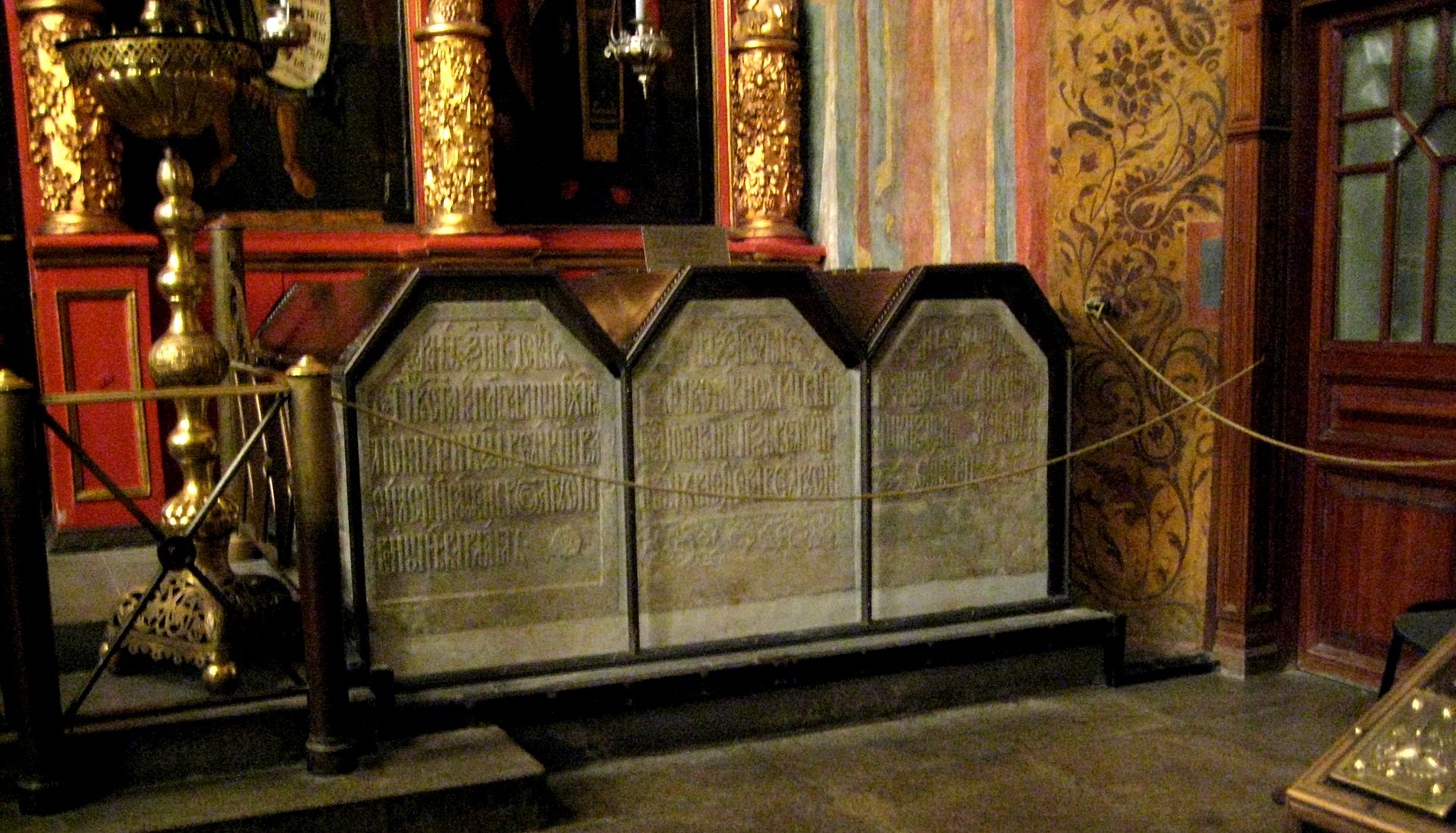
Graves of three Grand Princes of Moscow, Vasily III, Ivan III and Vasily II in the Archangel Cathedral; Credit – By shakko – Own work, CC BY-SA 3.0, https://commons.wikimedia.org/w/index.php?curid=15196587
There are a total of 46 tombs inside the cathedral, located in the chancel and the former sacristy behind the altar, in which 53 people – grand princes, tsars, one emperor, and some of their male relatives – are interred. All the burial sites have a similar structure. The remains are in sarcophagi interred 5 feet / 1.5 meters underground. Above each burial site is a large block of white stone with engraved names and biographical data in Old Church Slavonic writing. During the 20th century, the blocks of stone were encased in special bronze cases to protect them. Above the burial sites are frescoes on the wall with a representation of who is buried there.

Frescoes depicting Grand Princes of Moscow over their graves in the Archangel Cathedral; Credit – By shakko – Own work, CC BY-SA 3.0, https://commons.wikimedia.org/w/index.php?curid=7078668
Listed below are Grand Princes of Moscow, Tsars of Russia, and Emperors of Russia and their male relatives who were interred at the Archangel Cathedral in the Moscow Kremlin.
- Grand Prince (Великий князь Velikiy Knyaz: literally great prince, sometimes translated as grand duke) was the title of the male ruler of the Russian principalities before they were united into the Tsardom of Russia. A Grand Prince’s wife was titled Grand Princess.
- Tsar was used 1547 – 1721 to denote the male ruler of Russia. Tsar comes from Caesar, the Latin title of a Roman emperor. Tsar remained the popular designation of the Russian ruler despite the official change of style to Emperor in 1721.
- Tsaritsa or Tsarina was the title of the female ruler of Russia or the title of a Tsar’s wife. It was officially used from 1547 – 1721 when the title changed to Empress although Tsaritsa or Tsarina was sometimes still used.
- Tsarevich was the title given to Tsars’ sons before the 18th century.
- Tsarevna was used before the 18th century as the title for the daughter of a Tsar or the wife of a Tsarevich.
Patronymic: In Russian, a patronymic is the second name derived from the father’s first name: the suffix -vich means “son of” and the suffixes -eva, -evna, -ova, and -ovna mean “daughter of”
- Ivan I Kalita, Grand Prince of Moscow (1288 – 1340)
- Andrei Ivanovich, Prince of Serpukhov (1327 – 1353), son of Ivan I Kalita, Grand Prince of Moscow
- Simeon Ivanovich, Grand Prince of Moscow (1316 – 1353), son of Ivan I Kalita, Grand Prince of Moscow
- Ivan II Ivanovich, Grand Prince of Moscow (1326 – 1359), son of Ivan I Kalita, Grand Prince of Moscow
- Dmitry Ivanovich Donskoy, Grand Prince of Moscow (1350 – 1389), son of Ivan II Ivanovich, Grand Prince of Moscow
- Vladimir Andreevich, Prince of Serpukhov (1353 – 1410), grandson of Ivan I Kalita, Grand Prince of Moscow
- Ivan Vasilyevich, Prince of Moscow (1396 – 1417 ), son of Vasily I, Grand Prince of Moscow
- Ivan Vladimirovich, Prince of Serpukhov (1410 – 1422), son of Vladimir Andreevich, Prince of Serpukhov
- Vasily I, Grand Prince of Moscow (1371 – 1425)
- Yaroslav Vladimirovich, Prince of Borovsko-Yaroslavetsky (1388 – 1426 ), son of Vladimir Andreevich, Prince of Serpukhov
- Andrei Vladimirovich, Prince of Serpukhov (circa 1380s – 1426), son of Vladimir Andreevich, Prince of Serpukhov
- Pyotr Dmitrievich, Prince of Dmitrovsky (1385 – 1428 ), son of Dmitry Ivanovich Donskoy, Grand Prince of Moscow
- Andrei Dmitrievich, Prince of Mozhaisky (1382 – 1432 ), son of Dmitry Ivanovich Donskoy, Grand Prince of Moscow
- Yury Dmitrievich, Grand Prince of Moscow (1374 – 1434), son of Dmitry Ivanovich Donskoy, Grand Prince of Moscow
- Dmitry Yuryevich, Prince of Mozhaisky (1382 – 1432), son of Yury Dmitrievich, Grand Prince of Moscow
- Vasily Yuryevich, Prince of Zvenigorodsky (circa 1401–1448), son of Yury Dmitrievich, Grand Prince of Moscow
- Vasily II, Grand Prince of Moscow (1415 – 1462), son of Vasily I, Grand Prince of Moscow
- Yuri Vasilyevich, Prince of Dmitrovsky (1441 – 1473), son of Vasily II, Grand Prince of Moscow
- Andrei Vasilievich Menshoi, Prince of Vologda (1452 – 1481 ), son of Vasily II, Grand Prince of Moscow
- Ivan Ivanovich, Grand Prince of Moscow (1458 – 1490), son of Ivan III, Grand Prince of Moscow
- Boris Vasilievich, Prince of Volotsky (1449 – 1494), son of Vasily II, Grand Prince of Moscow
- Andrei Vasilievich Bolshoy, Prince of Uglich (1446 – 1493), son of Vasily II, Grand Prince of Moscow
- Ivan III (the Great), Grand Prince of Moscow (1440 – 1505)
- Dmitry Ivanovich, Grand Prince of Moscow (1483 – 1509), grandson of Ivan III, Grand Prince of Moscow
- Simeon Ivanovich, Prince of Kaluga (1487 – 1518), son of Ivan III, Grand Prince of Moscow
- Dmitry Ivanovich Zhilka, Prince of Uglitsky (1481 – 1521), son of Ivan III, Grand Prince of Moscow
- Vasily III, Grand Prince of Moscow (1479 – 1533)
- Andrei Ivanovich, Prince Staritsky (1490 – 1537), son of Ivan III, Grand Prince of Moscow
- Yuri Ivanovich, Prince of Dmitrovsky (1480 – 1536), son of Ivan III, Grand Prince of Moscow
- Tsarevich Dmitry Ivanovich of Russia (1552 – 1553) – Tsarevich, son of Ivan IV the Terrible, Tsar of Russia
- Yuri Vasilyevich, Prince of Uglich (1532 – 1563), son of Vasily III, Grand Prince of Moscow
- Vladimir Andreevich, Prince of Staritsa (1533 – 1569), grandson of Ivan III, Grand Prince of Moscow
- Vasily Vladimirovich Prince of Staritsa (1552 – 1573), son of Vladimir Andreevich, Prince of Staritsa
- Tsarevich Ivan Ivanovich of Russia (1554 – 1581), son of Ivan IV the Terrible, Tsar of Russia
- Ivan IV the Terrible, Tsar of Russia (1530 – 1584), son of Vasily III, Grand Prince of Moscow
- Feodor I, Tsar of Russia (1557 – 1598), son of Ivan IV the Terrible, Tsar of Russia
- Tsarevich Dmitry Ivanovich (1582 – 1591), son of Ivan IV the Terrible, Tsar of Russia
- Vasily IV Shuisky, Tsar of Russia (1552 – 1612)
- Tsarevich Vasily Mikhailovich of Russia (born and died 1639), son of Michael I, Tsar of All Russia
- Tsarevich Ivan Mikhailovich of Russia (1633 – 1639), son of Michael I, Tsar of All Russia
- Michael I, Tsar of All Russia (1596 – 1645), the first Romanov ruler
- Tsarevich Dmitry Alekseevich of Russia (1648 – 1649), son of Alexei I, Tsar of All Russia
- Tsarevich Simeon Alekseevich of Russia (1665 -1669), son of Alexei I, Tsar of All Russia
- Tsarevich Alexei Alekseevich of Russia (1654 – 1670), son of Alexei I, Tsar of All Russia
- Alexei I, Tsar of All Russia (1629 – 1676)
- Tsarevich Ilya Fedorovich of Russia (born and died 1681), Feodor III, Tsar of All Russia
- Feodor III, Tsar of All Russia (1661 – 1682)
- Tsarevich Alexander Petrovich of Russia (1691 – 1692), son of Peter I (the Great), Emperor of All Russia
- Ivan V, Tsar of All Russia(1666 – 1696)
- Peter II, Emperor of All Russia (1715 – 1730), son of Tsarevich Alexei Petrovich of Russia and grandson of Peter I (the Great), Emperor of All Russia
Burials Moved from the Ascension Cathedral to the Archangel Cathedral

Removing the sarcophagi before the destruction of the Ascension Monastery; Credit – Wikipedia
Women of the Rurik dynasty and women of the early Romanov dynasty along with some Russian noblewomen were interred at the Ascension Cathedral of the Ascension Convent in the Moscow Kremlin. In 1929, the Ascension Convent and its cathedral were destroyed by the Soviets to make room for the Red Army School. At that time, the remains of those buried there were moved to the crypt of the Archangel Cathedral in the Moscow Kremlin.
The list of those originally interred at Ascension Cathedral and moved to the crypt in the Archangel Cathedral in 1929 can be seen at Unofficial Royalty: Ascension Convent and Cathedral.
This article is the intellectual property of Unofficial Royalty and is NOT TO BE COPIED, EDITED, OR POSTED IN ANY FORM ON ANOTHER WEBSITE under any circumstances. It is permissible to use a link that directs to Unofficial Royalty.
********************
Works Cited
- Archangel-cathedral.kreml.ru. 2022. Archangel Cathedral. [online] Available at: <https://archangel-cathedral.kreml.ru/en-Us/museum-archangel-cathedral/?utm_source=kreml.ru&utm_medium=referral&utm_campaign=kreml.ru&utm_referrer=kreml.ru> [Accessed 24 March 2022].
- De.wikipedia.org. 2022. Erzengel-Michael-Kathedrale (Moskau) – Wikipedia. [online] Available at: <https://de.wikipedia.org/wiki/Erzengel-Michael-Kathedrale_(Moskau)> [Accessed 24 March 2022].
- En.wikipedia.org. 2022. Cathedral of the Archangel – Wikipedia. [online] Available at: <https://en.wikipedia.org/wiki/Cathedral_of_the_Archangel> [Accessed 24 March 2022].
- Ru.wikipedia.org. 2022. Архангельский собор (Московский Кремль) — Википедия. [online] Available at: <https://ru.wikipedia.org/wiki/%D0%90%D1%80%D1%85%D0%B0%D0%BD%D0%B3%D0%B5%D0%BB%D1%8C%D1%81%D0%BA%D0%B8%D0%B9_%D1%81%D0%BE%D0%B1%D0%BE%D1%80_(%D0%9C%D0%BE%D1%81%D0%BA%D0%BE%D0%B2%D1%81%D0%BA%D0%B8%D0%B9_%D0%9A%D1%80%D0%B5%D0%BC%D0%BB%D1%8C)> [Accessed 24 March 2022].
- Ru.wikipedia.org. 2022. Некрополь Архангельского собора — Википедия. [online] Available at: <https://ru.wikipedia.org/wiki/%D0%9D%D0%B5%D0%BA%D1%80%D0%BE%D0%BF%D0%BE%D0%BB%D1%8C_%D0%90%D1%80%D1%85%D0%B0%D0%BD%D0%B3%D0%B5%D0%BB%D1%8C%D1%81%D0%BA%D0%BE%D0%B3%D0%BE_%D1%81%D0%BE%D0%B1%D0%BE%D1%80%D0%B0> [Accessed 24 March 2022].

